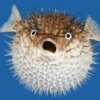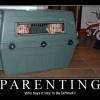Please fill out as much as possible below and give us a description of what is wrong with your fish.
Type of fish: Labidochromis Caeruleus
Symptoms: n/a
Other tank mates: Placidochromis Sp Electra, Bristlenose
Tank size / capacity: 180L
Type of Food fed: NLS Cichlid 1mm
Feeding frequency/amount: 3 pinches morning and evening
Substrate: River Sand
Type of filtration: Aquis 1000 Cannister
Frequency of filter cleans: Monthly
Frequency and % volume of water changes: 1-2 a week 25%
Last water change: Saturday 31/1/15
PH: 8.0
KH:
GH:
Nitrite: 0
Nitrate: 0
Ammonia: 0
Phosphate:
Water temp: 29
Medications used recently to date:
Any recent changes..new fish/filters/power outages etc etc: Electras added 31/1
Hi guys.
Is there a problem with the strain of Electric Yellows? Once fully cycled, the first lot of fish I put in my tank was 5 x Electric Yellows (around 40-50mm). I then put another five in from a different LFS. I have now lost 3 of the 10. 2 or maybe even 3 may have been from the first batch. I have become a bit paranoid, and that is the first thing I check for when I wake up or get home. Last night, I actually saw one swim up to the top of the tank really quickly, and then just free fall nose dive back to the bottom, and that was it. One of the others may have been beaten up, and stressed, had a fin missing. I tried to separate,but obviously too late. Is there a problem with them in Australia, or is this natural selection in action? The Electra's aren't causing a problem, they stick to themselves, and even get bullied by the Electric Yellows, despite having size on their side.
Thanks.
TJ
Edited by TJ__74, 04 February 2015 - 09:26 AM.











